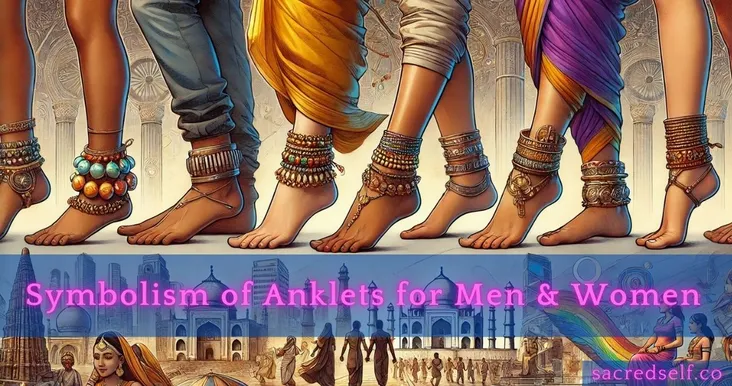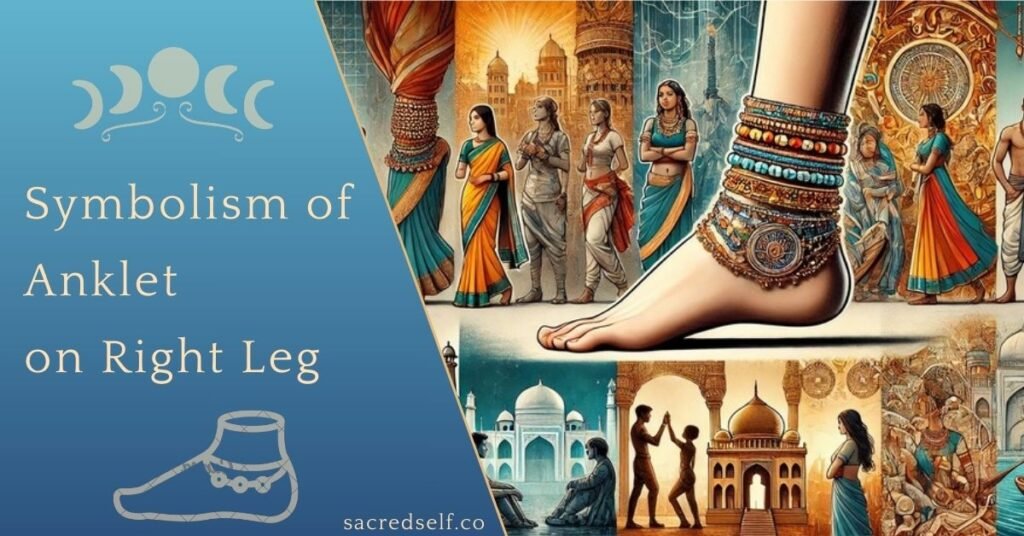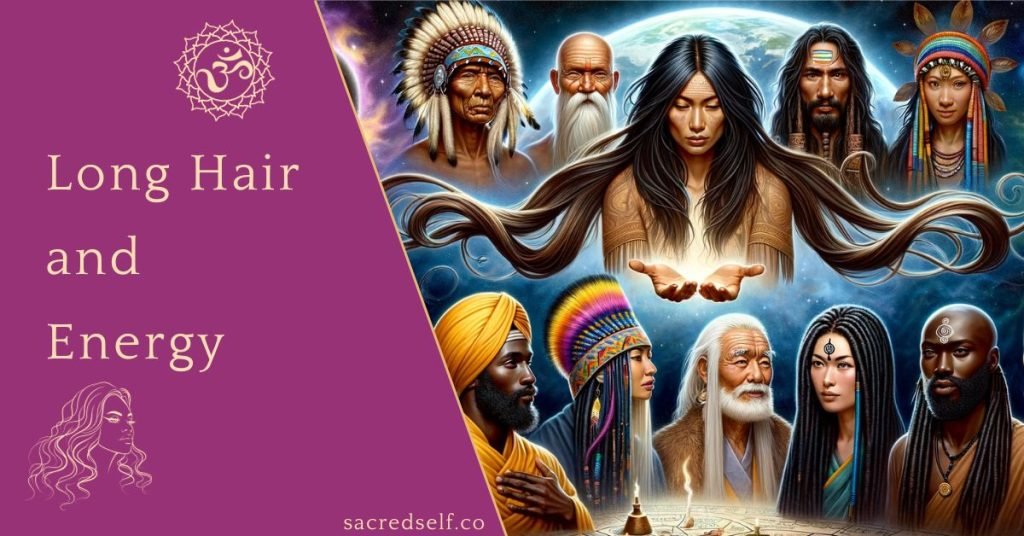Whether you’re wearing one as a nod to tradition, a reflection of individuality, or simply as a fashion statement, anklets worn on the right leg have deeper meanings.
In this article I will explore these deeper meanings of anklets when worn on the right leg, plus look at their symbolism for men and women, materials, placement, and more.
Key Takeaways
-
Cultural and Spiritual Significance: Right-leg anklets symbolize action, authority, and individuality, with ties to traditions emphasizing empowerment and energy flow.
-
Gender-Specific Meanings: For women, they reflect femininity, elegance, or independence; for men, they represent confidence, creativity, and breaking stereotypes.
-
Material-Based Symbolism: Materials like gold, silver, beads, and leather convey unique energies, from wealth and grounding to creativity and strength.
-
Importance of Placement: Right-leg anklets signify outward energy and boldness, while left-leg anklets focus on introspection and tradition.
Spiritual Significance of Right-Leg Anklets
Anklets have a long history across various cultures, where they’ve been symbols of status, spirituality, and personal identity. The right-leg placement adds a unique layer of meaning:
- Biblical References: In the Bible (Isaiah 3:16-20), anklets symbolize beauty, grace, and wealth. The right side is often associated with authority, action, and divine favor, making right-leg anklets a potential representation of empowerment.
- Energy and Action: In many traditions, the right side of the body symbolizes giving energy, outward expression, and individuality. A right-leg anklet can emphasize confidence and boldness.

Symbolism of Right-Leg Anklets for Women
- Femininity and Elegance: Gold and silver anklets exude luxury and grace, with silver anklets often associated with emotional balance and grounding energy.
- Cultural Identity: In Indian culture, anklets signify marital status and are believed to ward off negativity. A right-leg anklet can symbolize a personal deviation from traditional norms or a modern twist on cultural heritage.
- Personal Expression: Many women wear anklets as a fashion statement, with beaded designs and charms representing individuality, independence, and creativity.
Symbolism of Right-Leg Anklets for Men
Men wearing anklets are making a bold statement of confidence and individuality. On the right leg, anklets can symbolize:
- Strength and Masculinity: Historically, men in cultures like ancient Egypt wore anklets to signify status and power. Today, right-leg anklets align with action-oriented energy and boldness.
- Creative Expression: Modern interpretations of anklets for men include leather, silver, or bead designs that blend simplicity with a sense of personal style.
- Breaking Stereotypes: Men’s anklets challenge traditional norms, offering a unique way to embrace individuality while showcasing artistic or cultural preferences.
Right vs. Left Leg Anklet Symbolism
The placement of an anklet—on the right or left leg—can change its meaning entirely:
- Right Leg: Represents action, energy, and outward expression. For both men and women, wearing an anklet on the right leg can be a bold statement of confidence and individuality.
- Left Leg: Often linked to introspection, receptivity, and creativity. In cultures like India, the left side is associated with tradition and receiving energy.
- Western Perspective: In modern Western contexts, placement is often more about style than symbolism, though the right leg may still convey a sense of individuality or assertiveness.
| Context | Meaning/Belief | Significance/Practice |
|---|---|---|
| Biblical References |
– Symbolizes beauty, grace, and wealth. – Right side associated with authority and divine favor. |
Represents empowerment and blessings in life. |
| Energy and Action |
– Right leg symbolizes giving energy and individuality. – Represents confidence and outward expression. |
Highlights action-oriented energy and personal boldness. |
| For Women |
– Femininity and elegance (gold and silver anklets). – Cultural identity and marital status in traditions like Indian culture. |
Worn as a symbol of grace, emotional balance, or independence. |
| For Men |
– Strength and masculinity. – Creative expression and individuality. |
Breaks stereotypes and symbolizes confidence in style or culture. |
| Right vs. Left Placement |
– Right Leg: Action, energy, and outward expression. – Left Leg: Introspection, receptivity, and creativity. |
– Right leg: Bold statement of individuality. – Left leg: Focuses on inner growth and tradition. |
Anklet Meanings Across Cultures
African Traditions
- Status and Wealth: In African cultures, anklets are deeply symbolic of wealth and social status. Among the Maasai people of East Africa, intricately beaded anklets represent prosperity and prominence within the community. Similarly, the Zulu, renowned for their vibrant beadwork, use anklets in special ceremonies to honor social achievements and respect.
- Rites of Passage: In West African traditions, such as those of the Igbo people, anklets play a significant role in rites of passage. Brass or coral anklets are presented during ceremonies marking the transition to adulthood or marriage, symbolizing maturity and readiness for new responsibilities.
Middle Eastern and Arabian Cultures
- Sensuality and Femininity: In Middle Eastern and Arabian cultures, anklets have long been associated with beauty and allure. Often paired with bells or delicate chains, these anklets emphasize a woman’s grace and femininity through sound and movement. Such symbolism is vividly depicted in classical texts like The Arabian Nights.
- Spiritual Protection: Anklets adorned with protective symbols, such as the evil eye or hamsa hand, are prominent in Turkish and Arabian traditions. These designs, rooted in Islamic culture and folklore, are believed to shield the wearer from negative energies and misfortune.
Indian Traditions
- Dance and Expression: In Indian classical dance forms like Bharatanatyam and Odissi, anklets known as ghungroos are essential. These strings of small bells create rhythmic sounds that enhance storytelling through movement. The importance of these anklets is extensively detailed in the Natya Shastra, an ancient treatise on performing arts.
- Blessings and Rituals: Anklets hold profound spiritual significance in Hindu wedding ceremonies, where brides traditionally wear silver anklets as part of their bridal jewelry. These anklets symbolize blessings for marital harmony and prosperity, as emphasized in the Shilpa Shastra, an ancient text on Indian craftsmanship.
Southeast Asian Beliefs
- Respect for the Divine: In Southeast Asia, anklets are often connected to spiritual practices. In Thai and Burmese traditions, they are worn as part of offerings to local deities and spirits, symbolizing reverence and devotion.
Western Perspectives
- Bohemian and Subcultural Movements: During the 1960s, anklets became iconic within the bohemian and hippie movements. Crafted from natural materials such as leather and shells, they symbolized freedom, individuality, and a connection to nature.
- Friendship and Bonds: In contemporary Western culture, anklets are often exchanged as tokens of friendship or solidarity. Handmade anklets, particularly during festivals and summer gatherings, are cherished keepsakes representing personal bonds.
Other Symbolic Interpretations
- Astrological Anklets: Anklets featuring gemstones or zodiac motifs have become popular, aligning wearers with specific cosmic energies. These designs often draw from modern interpretations of ancient astrological traditions.
- Healing Practices: In alternative healing practices, anklets embedded with crystals like amethyst or quartz are believed to promote emotional balance and physical well-being, blending style with holistic benefits.
Unique Regional Uses
- Pacific Islands: In Polynesian cultures, anklets made from shells or woven plant fibers are integral to traditional ceremonies and dances, emphasizing a harmonious connection with nature.
- Native American Tribes: Some Native American tribes use anklets adorned with feathers or beads in spiritual and healing rituals. These anklets serve as a medium to connect with the spiritual realm and honor their cultural heritage.
| Culture | Meaning | Significance |
|---|---|---|
| African Traditions |
– Status and wealth – Rites of passage |
– Beaded anklets symbolize prosperity (e.g., Maasai, Zulu). – Brass or coral anklets mark maturity (e.g., Igbo). |
| Middle Eastern & Arabian Cultures |
– Sensuality and femininity – Spiritual protection |
– Emphasizes grace with bells and chains. – Protects against negativity using symbols like the evil eye. |
| Indian Traditions |
– Dance and expression – Blessings and rituals |
– Ghungroos enhance storytelling in classical dances. – Brides wear anklets for marital blessings. |
| Southeast Asian Beliefs |
– Respect for the divine – Craftsmanship and identity |
– Worn in offerings to deities (e.g., Thailand, Burma). – Reflect cultural heritage with handcrafted designs. |
| Western Perspectives |
– Bohemian freedom – Friendship and bonds |
– Iconic in hippie culture (1960s). – Exchanged as tokens of friendship. |
| Enhancing Symbolism |
– Astrological meanings – Healing practices |
– Aligns with cosmic energies using gemstones. – Crystals promote emotional balance and well-being. |
| Unique Regional Uses |
– Pacific Islands – Native American Tribes |
– Shell anklets used in traditional dances. – Beaded anklets connect with the spiritual realm. |
Anklet Materials and Their Symbolism
- Gold: Associated with wealth, abundance, and divine energy, gold anklets are luxurious and radiant.
- Silver: Known for its grounding and calming qualities, silver anklets are popular in spiritual practices and believed to repel negativity.
- Beads: Beaded anklets symbolize creativity and individuality, with different beads carrying unique meanings, from protection to energy balance.
- Leather: Rugged and earthy, leather anklets represent strength, simplicity, and a connection to nature.
| Material | Symbolism | Significance/Use |
|---|---|---|
| Gold |
– Wealth, abundance, and divine energy. – Radiance and luxury. |
Ideal for occasions that signify prosperity and celebration. |
| Silver |
– Grounding and calming qualities. – Repels negativity and enhances emotional balance. |
Popular in spiritual practices for peace and protection. |
| Beads |
– Creativity and individuality. – Specific beads (e.g., turquoise, black onyx) carry unique meanings. |
Perfect for playful designs or symbolic purposes. |
| Leather |
– Ruggedness and strength. – Connection to nature and simplicity. |
Best for minimalist and earthy styles. |
DIY Anklet Ideas: Craft Your Story
Creating your anklet adds a personal touch, allowing you to imbue it with your energy and meaning. Here are some simple DIY ideas:
- Beaded Anklets: Use colorful beads like turquoise for energy or black onyx for protection. String them together for a playful or symbolic design.
- Charm Anklets: Add charms that resonate with your personality—stars, hearts, or symbolic pendants make for a meaningful accessory.
- Braided Designs: Use leather, cotton, or metallic threads to create a boho or minimalist anklet.
- Delicate Chains: Craft an elegant anklet with gold or silver chains, attaching clasps and small accents for a chic finish.
Caring for Your Anklets
To keep your anklets beautiful and meaningful, proper care is essential:
- Material-Specific Care:
- Gold/Silver: Clean gently with a jewelry cloth and avoid exposure to harsh chemicals.
- Beaded Designs: Wipe beads with a soft, damp cloth and store flat to prevent tangling.
- Avoid Water Damage: Remove anklets before swimming or bathing to prevent tarnishing or weakening.
- Proper Storage: Store anklets in separate pouches or compartments to avoid scratching or tangling.
FAQs About Anklets
1. Can men wear anklets, and on which leg?
Yes! Men can wear anklets on either leg. The right leg symbolizes action and strength, while the left represents creativity and introspection.
2. What’s the meaning of an anklet on the right leg in the Bible?
The Bible associates anklets with beauty and wealth, though right-leg placement specifically may reflect authority and divine favor in a cultural context.
Should I wear my anklet to bed?
While you can wear durable anklets like leather to bed, delicate designs are best removed to avoid damage or snagging.
Final Words
Anklets are rich in symbolism, culture, and personal meaning. Similar to symbolism of having long hair, anklets too symbolize strength, individuality, or tradition.
By choosing the right material, design, and placement, your anklet becomes a unique extension of your energy and identity.
What about your choice of anklet? What inspired you to wear an anklet? Is it a connection to culture, a personal style statement, or something else entirely?
Share your story in the comments and inspire others on their spiritual journey!
Namaste. 🙏
Relevant posts
This post may contain affiliate links. As an Amazon Associate, and as an affiliate of other online retailers, we earn from qualifying purchases - this means that if you buy something through a link, we may earn a small commission at no extra cost to you.



